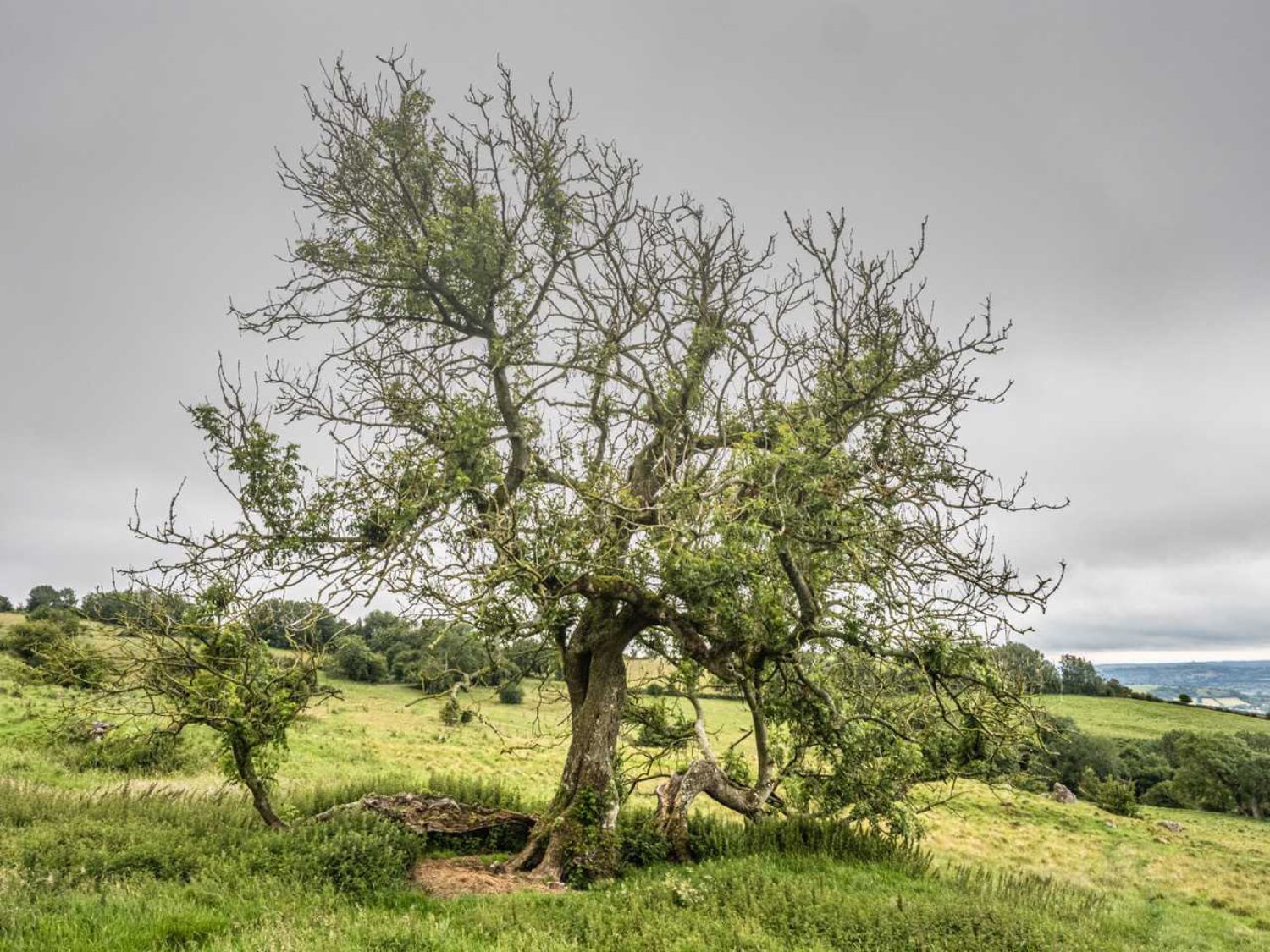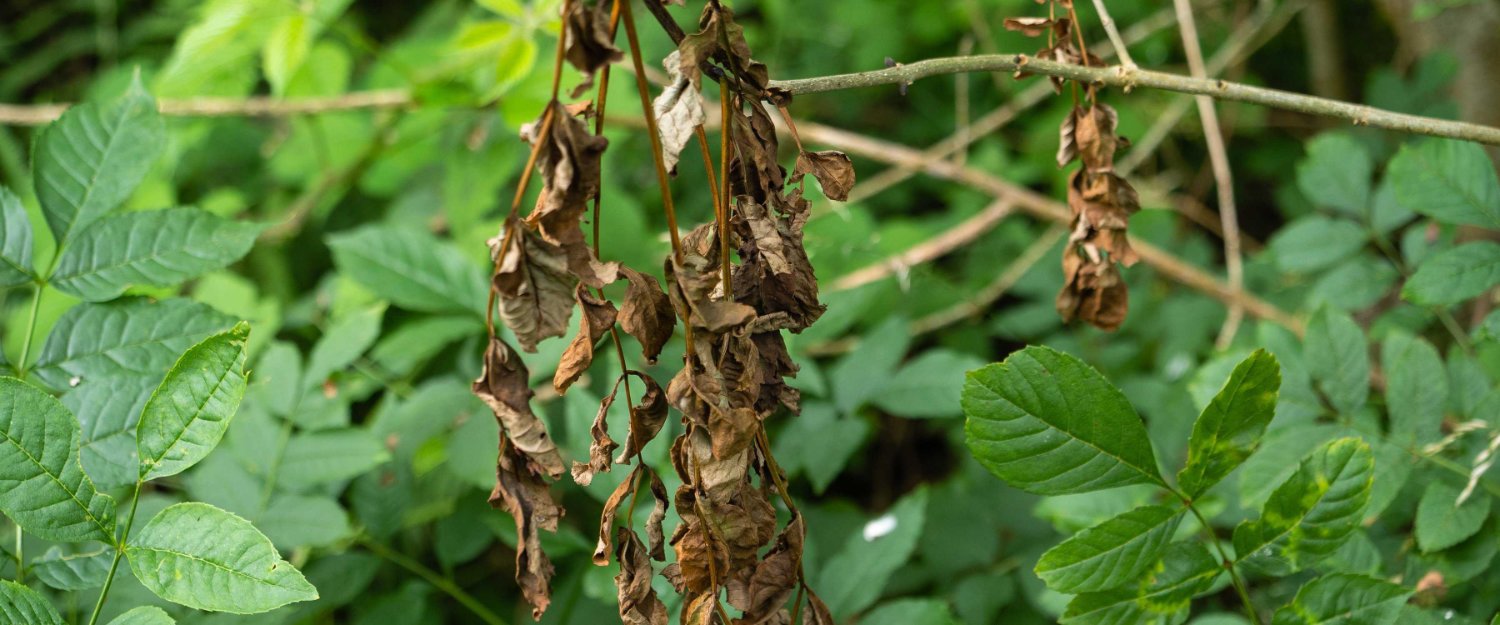
My children have never seen a full-grown elm tree, once one of the glories of the English countryside. My grandchildren may be the last generation to see an ash tree, a similarly well-loved feature of our current landscape. The Woodland Trust estimate that up to 95 per cent of the two billion ash trees in the UK may be killed by Ash Dieback Disease – many of them in the next ten years.
The sight of so many great trees dying in the near future might finally shock us into realising the scale of the environmental catastrophe that threatens our planet.
Ash dieback is caused by the fungus Hymenocyphus fraxineus. It appears to have been introduced into Europe from East Asia, probably on imported trees infected with the disease. The first reports came from Poland in the early 1990s. It was discovered in England on a batch of trees imported from Holland in 2012 and, by October of that year, further cases had been found in Norfolk. One clear message from this tragedy is that we need to be much more careful when moving processed and, more particularly, live plant material around the world. Live plants are traded to save cost as well as to meet the sheer demand for wood products. The UK was importing thousands of ash plants from infected parts of Europe until a ban came into place in 2012.
In October 2013, infected trees were found in South Wales. The disease has moved quickly across the UK, partly through wind spread of the fungal spores but also by transplanting infected trees. The first case was recorded in the Mendips in 2015 and it is now visible throughout the area.
The consequences of the disease are beginning to have an impact on people, as organisations respond to concerns about public safety. The Somerset Wildlife Trust has been forced to restrict access to some of its woodland reserves, and to fell trees that are adjacent to rights of way. In future, it may be too dangerous to visit some of the bluebell woods that are such a special feature of the English countryside.
In line with advice from government, local authorities are removing ash trees along major roads. However, only a small minority of ash trees are on public land. Natural Devon, the Devon Local Nature Partnership (LNP), has produced an action plan that illustrates the scale of the problem. It estimates that there are 448,000 ash trees beside Devon’s 13,000km of public roads and 99 per cent of these trees are the responsibility of private landowners. My conversations with local farmers suggest that few of them are aware of the threat.

We will certainly notice the changes to our landscape, but there are more profound impacts that are less visible. I spoke to a Somerset-based arboriculturist, Ed Pyne, who, in addition to climbing trees for a living, has made an extensive study at Cardiff University of the ecology of fungal tree interactions. He is now pursuing a doctorate in the same specialism. He speaks of ‘functional extinction’ – the fact that although many individual ash trees may survive, their role as a ‘keystone species’ supporting almost a thousand other organisms in a unique ecosystem will, inevitably, be lost. Even more alarmingly, he talks about an ‘extinction cascade’ – the idea that as key species such as trees become extinct, so the creatures that live on them become vulnerable themselves. Of the hundreds of species living on ash, 44 live only on ash, and a further 62 have few alternative hosts.
Pyne and his colleague, Ian Chedgy, are keen to alert the wider public to the scale of the threat, but also urge landowners not to panic. They quote the case of Denmark where, as soon as the disease was spotted, most ash trees were promptly felled, removing a useful source of evidence about how the disease progresses.
“What we need to do” says Pyne, “is firstly to monitor how dieback develops. Trees that pose a threat to public safety should, of course, be removed, but some of those that remain, even if infected, may contain the genetic material needed to breed resistant strains.”
Ash has a fighting chance compared with the elm because the latter was propagated by cuttings or suckers, and as a result almost all were genetically identical. When Dutch Elm disease came along, the trees were all equally vulnerable. Ash, however – as anyone who gardens near one will know to their cost – is profligate in its production of seeds. One day, somewhere in Europe, a resistant strain will develop, though it will not be in time to prevent wholesale change to our landscape.
Rather than pinning hopes on breeding resistance, Ian Chedgy advises a focus on replanting a mix of trees that will replicate the ecosystem of ash woodland.
“Ash is unique”, he says, “in the speed with which nutrients from fallen leaves are recycled in the soil. Nothing can replace that environment exactly, but Swedish researchers suggest that a mix of nine common trees can provide a place for 95 per cent of the organisms that currently depend on ash woods.”
Luckily, the need to plant more trees to help combat climate change is becoming more widely understood.
We need to act quickly and with determination if we are to limit the damage that ash dieback will do to our environment and our landscape. The Devon Ash Dieback Resilience Forum promotes the ‘Devon 3-2-1 formula : “at least 3 new trees for loss of a large tree, 2 for a medium tree and 1 tree for a small tree”. Putting those figures alongside the potential loss of 1.8 billion ash trees, however, illustrates the true scale of the challenge we face.




